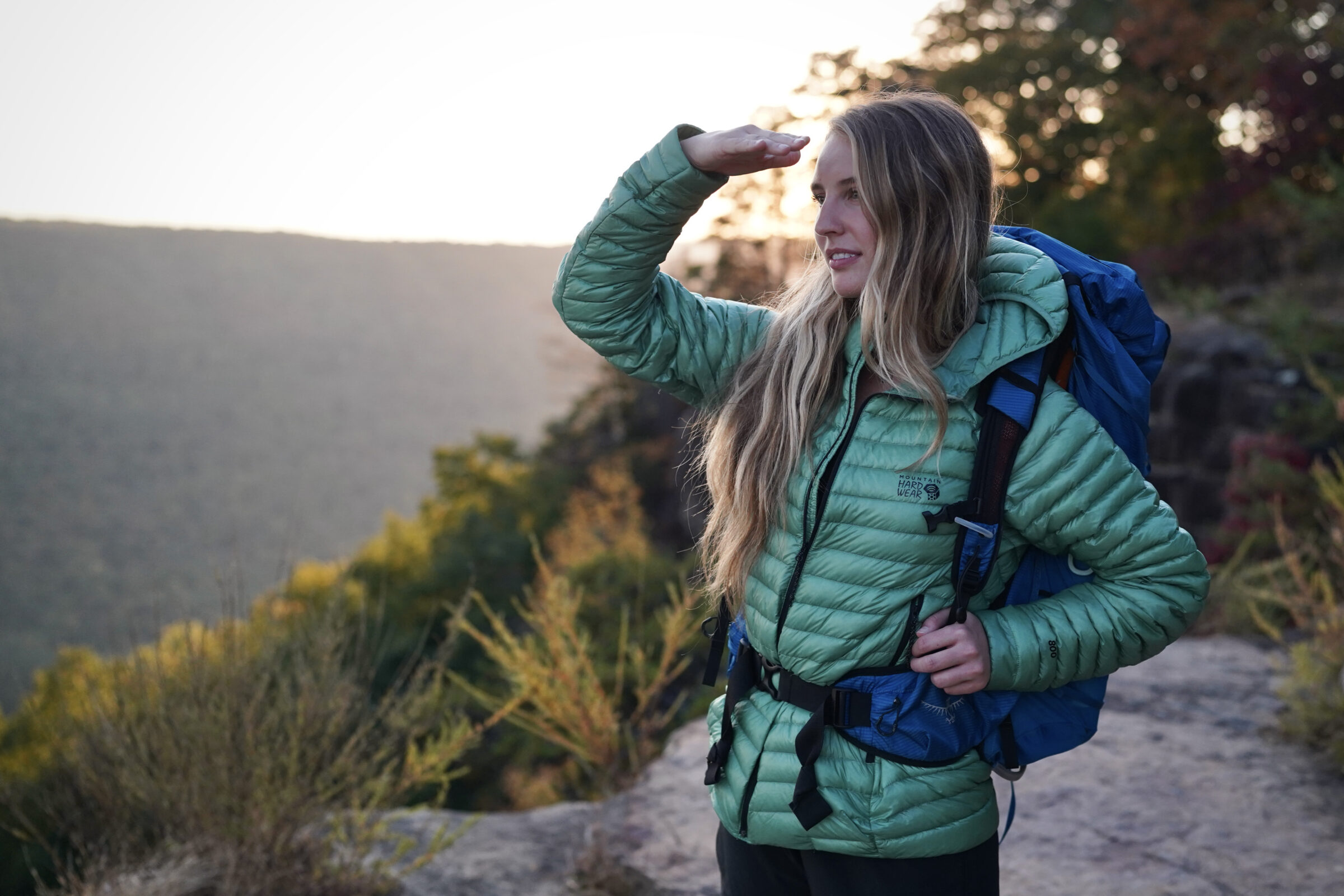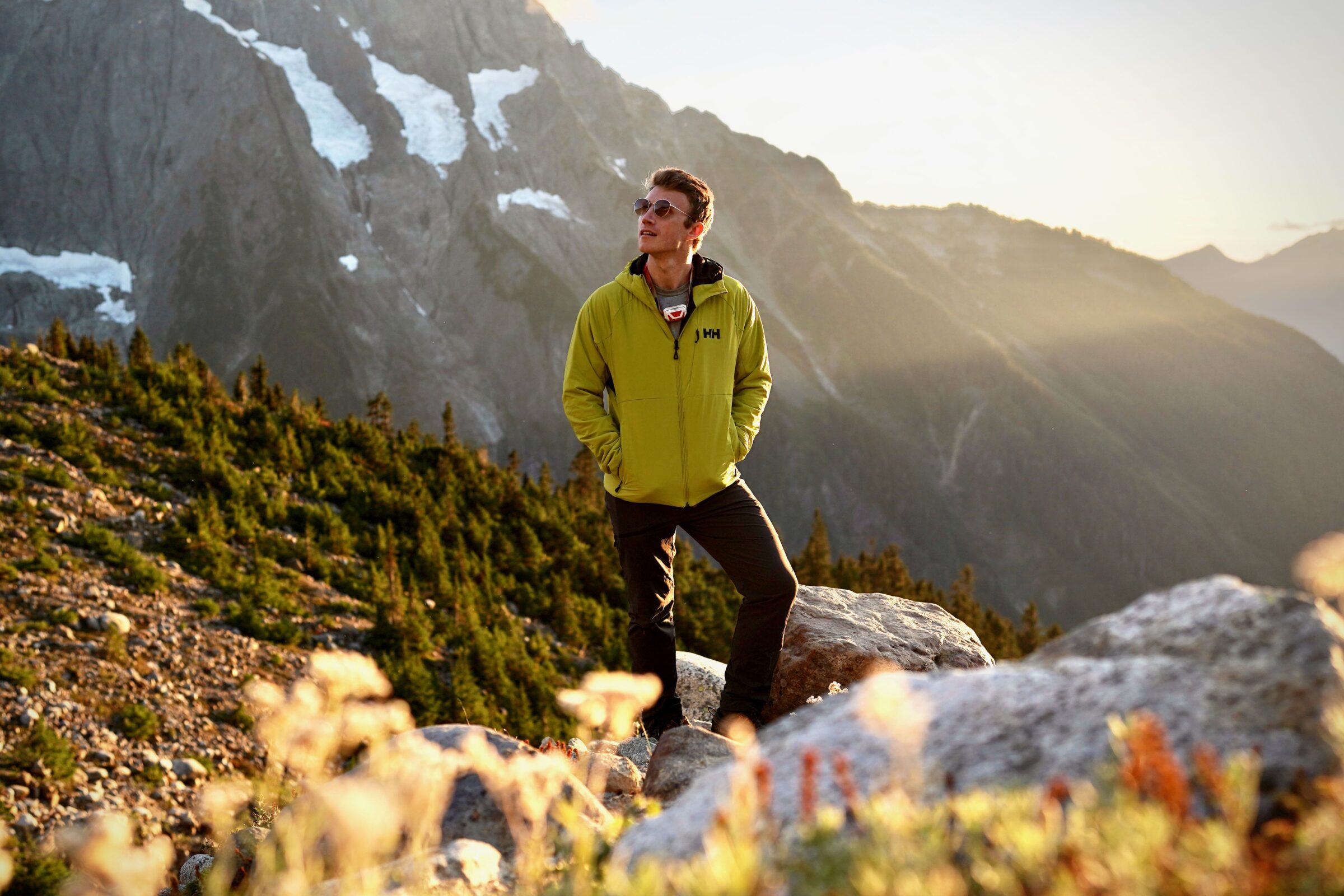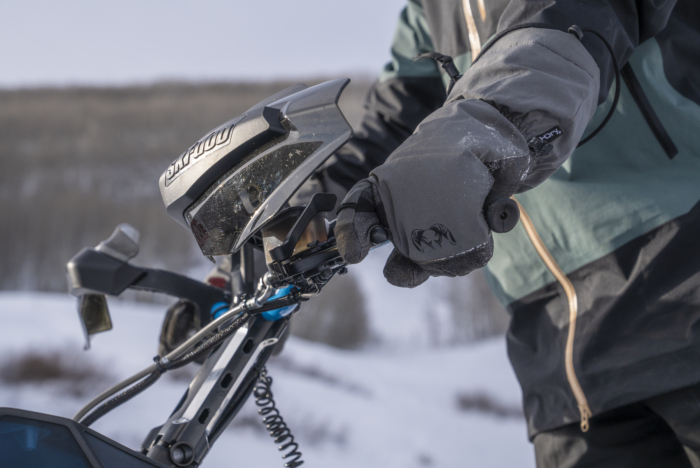The Best Down Jackets of 2025
- Fill: 850
- Weight: 12.0 oz.
- Key features: Synthetic insulation strategically placed in areas prone to getting wet
Pros
- Hybrid insulation design is helpful in wet weather
- Solid warmth-to-weight ratio
- Comfortable, stylish fit
Cons
- Expensive
- No integrated stuff sack
- Fill: 650
- Weight: 11.0 oz.
- Key features: Durable and recycled shell fabric, slimmed down simple design looks good around town
Pros
- Affordable
- Quite durable given the price
- Simple and sleek design looks good around town
Cons
- Somewhat heavy for the lack of features
- Not much adjustability
- Fill: 800
- Weight: 15.0 oz.
- Key features: Recycled ripstop polyester fabric and liner, interior chest pocket doubles as a stuff sack
Pros
- Simple, classic style
- Comfortable fit
- Includes an adjustable hood and hem
- Includes 5 total pockets
Cons
- On the heavier side for a technical piece
- Fill: 700
- Weight: 9.3 oz.
- Key features: Stitch-free baffle construction for non-restrictive flexibility, meets RDS
Pros
- Extremely durable
- No stitches or glue to degrade or restrict movement
- Sheds water and resists winds like no other
- Versatile
- Zippered hand and chest pockets
- Super stylish
Cons
- Not as packable as others
- Fill: 800
- Weight: 14.67 oz.
- Key features: Water-resistant down, stretch knit cuffs, helmet-compatible hood, two deep inner pockets
Pros
- Excellent warmth-to-weight ratio
- Ultimate mobility
- Keeps you warm when slightly wet
- 5 well-placed generous pockets keep necessities accessible
- Packable
- Extremely comfortable
Cons
- Slim fit makes layering underneath difficult
- Soft outer material raises durability concerns
- Pricey
- Fill: 800
- Weight: 17.1 oz.
- Key features: Certified Advanced Global TDS by NSF International, DWR treatment, Fair Trade Certified sewn
Pros
- Helmet-compatible hood
- Two external chest pockets and two hand pockets for easy access while on the wall
Cons
- Take care: Not the most tenacious face fabric
- Fill: 800
- Weight: 10.7 oz
- Key features: Superior performance in water-free and PFC-free durable water repellent (DWR), insulated hood with single-pull drawcord adjust, chest pocket doubles as stuff sack
Pros
- Exceptionally lightweight and functional
- Multiple pockets in ideal places
- Insulated snug-fit hood
- Truly weather-resistant
Cons
- Slightly tapered fit can make layering challenging
- Fill: 800
- Weight: 8.8 oz.
- Key features: Adjustable hem, packs down small into hand pocket, ultralight ripstop fabric
Pros
- Stellar warmth-to-weight ratio
- Packs down ridiculously small
- Ultralight
Cons
- Cuffs aren’t elasticated, making it hard to seal in warmth
- Somewhat boxy fit in the torso
More Down Jackets We Tested & Love
- Fill: 800
- Weight: 15.4 oz.
- Key features: Wind, water, and abrasion resistance plus waterproof shoulders and hood
Pros
- Responsible Down Standard (RDS) certified down
- Five pockets: two external hand pockets, chest pocket, dual internal stash pockets
Cons
- Cozy but not built for supreme warmth
- Fill: 800
- Weight: 20.6 oz.
- Key features: Tougher ripstop fabric over high-use areas, two-way zipper with storm flap, over-the-helmet hood with stiffened peak for increased protection
Pros
- Superior warmth-to-weight ratio
- Anatomical shape that allows the jacket to move with you during activity
- Durable
Cons
- Hood is pretty large and floppy unless you are wearing a helmet
- Weight: 12 oz.
- Fill: 800
- Key features: Secure inner pocket, adjustable hood, YKK zippers
Pros
- Comfortable, soft to the touch
- Stylish
- Perfect fit
- Versatile uses
- RDS-Certified Down
Cons
- Soaked up more water than others
- Average warmth for the weight
- Outer fabric showing wear and tear with little use
- Fill: 750
- Weight: 18.2 oz.
- Key features: Synthetic insulation placed in areas prone to getting wet, construction allows down to mold to body for efficient thermal performance
Pros
- Large baffles hold more heat
- DWR repels wet snow
- Outer materials resist abrasions, cut wind
- Insulated hood with high neck protects face
- Big durable zippers you can grab with gloves
Cons
- High price tag
- Hem length felt short/skin exposed with certain movements
- Fill: 800
- Weight: 13.3 oz.
- Key features: Soft to the touch down with a great feel and look, comfort
Pros
- Reasonable price point
- Silky soft to the touch
- Very comfortable
- Packable
Cons
- Lack of mobility limits movement in activities like climbing or scrambling
- Wets out quicker than others
- Fill: 900
- Weight: 17.4 oz.
- Key Features: Box baffle construction and heat-reflective inner lining in torso boost warmth without the weight
Pros
- Best-in-class warmth-to-weight ratio
- 900 fill-power down is treated with Nikwax hydrophobic finish
- 10-Denier Pertex Quantum outer shell has DWR finish
- Two-way front zipper
- Includes stuff sack
Cons
- Tight fit in midsection due to aggressively tapered waist
- No inner pockets
- Pricey
- Fill: 800
- Weight: 14 oz.
- Key features: Water-resistant goose down, DWR-treated nylon face fabric
Pros
- Packs into its own pocket
- Increased bust circumference on women’s jacket for improved fit
- 20-denier ripstop nylon liner
Cons
- Not premium construction for rugged outdoor play
- Fill: 900
- Weight: 10.8 oz.
- Key features: Ethically sourced down, long stitchless panels on underarm and sides
Pros
- Great warmth-to-weight ratio
- Trim fit but can still layer underneath
- Durable design
Cons
- No internal drop-in pockets
- Separate stuff sack to keep track of
The Best Down Jackets Comparison Chart
| Jacket | Price | Weight | Fill Power | Shell Fabric Denier | Packability |
| Arc’teryx Cerium Hoody | $400 | 12.0 oz. | 850 | 10D | Included stuff sack |
| REI Co-op 650 Down Jacket 2.0 | $129 | 15.4 oz. | 650 | 20D | Packs into hand pocket |
| Patagonia Down Sweater Hoodie | $329 | 15.0 oz. | 800 | 20D x 30D | Packs into internal chest pocket |
| Mountain Hardwear Stretchdown Hoody | $300 | 17.7 oz. | 700 | 20D | No |
| The North Face Summit Series Breithorn Hoodie | $430 | 14.7 oz. | 800 | 15 D | Packs into hand pocket |
| Patagonia Fitz Roy | $399 | 17.1 oz | 800 | 20D | Packs into hand pocket |
| Black Diamond Approach Hoody | $380 | 10.7 oz | 800 | 10D x 7D | Packs into hand pocket |
| Mountain Hardwear Ghost Whisperer | $360 | 8.8 oz | 800 | 10D x 10D | Packs into hand pocket |
| Outdoor Research Helium Down | $299 | 16.2 oz. | 800 | 15D x 30D | Packs into hand pocket |
| Rab Neutrino Pro Down Jacket | $400 | 20.6 oz. | 800 | 20D | Included stuff sack |
| Stio Pinion Down Hooded Jacket | $285 | 12 oz. | 800 | 20D | Packs into zippered pocket |
| Arc’teryx Thorium Hoody | $500 | 18.2 oz. | 750 | Unavailable | No |
| Outdoor Research Transcendent Down Hoodie | $279 | 13.3 oz | 800 | 20D | Packs into zippered pocket |
| Rab Mythic Ultra | $495 | 17.4 oz. | 900 | 10D | Included stuff sack |
| Cotopaxi Fuego | $295 | 14.0 oz. | 800 | 20D | Packs into internal pocket |
| Feathered Friends Eos Down Jacket | $409 | 10.8 oz. | 900 | Unavailable | Included stuff sack |

How We Tested the Best Down Jackets
Our Expert Testers

Our Testing Grounds & Process

Buyer’s Guide: How to Choose the Best Down Jacket
Warmth

Fill Power
- 400-500: fair quality
- 600: good quality
- 700: great quality
- 800: excellent quality
- 900 and above: highest quality

Fill Weight
Warmth-to-Weight Ratio


Durability

Water Resistance & Hydrophobic Down

Down vs. Synthetic
- Pros of down: Excellent warmth-to-weight ratio, comfort, compressibility, lightweight, high inherent warmth
- Cons of down: Inability to insulate when wet, not super breathable, more difficult to wash, pricier

Responsibly Sourced Down

Eco-Friendly & Recycled Materials
Fit


Weight

Storing and Caring for Down Jackets

Down Jacket Hoods & Sleeves

Pockets
Athletic Features

Price & Value
Budget
Mid-Tier

Premium

Frequently Asked Questions
A down jacket holds heat around your body’s core in order to maintain a comfortable level of warmth when the temperatures drop. A spectrum of down jackets exists from plush and stylish for everyday use to lighter, packable designs for year-round backcountry adventures.
A jacket’s fill power is the down’s quality and amount of loft. You’ll see jackets labeled as 600-fill or 800-fill, for instance. The fill weight, which we measure in ounces, reflects the density or amount of down stuffed inside the jacket.
So when two 700-fill jackets have different weights, we know the heavier one is warmer.
On the other hand, if two down jackets weigh the same with different fill power (two 15-ounce jackets with 650-fill and 800-fill), the higher fill jacket is going to be less bulky, lighter, and more compressible.
It’s tricky to compare jackets with differing fill power. But in general, the lower the fill power, the less loft and warmth.

Down jackets have a huge variance of warmth. Some jackets are constructed to withstand freezing or sub-zero temperatures, while others are a match for summer, spring, and fall backpacking trips. Here are the broad categories of jackets, depending on their fill weight:
- Lightweight: 3-4 ounces of down fill, three-season jacket, skiing midlayer
- Moderate weight: 5-6 ounces of down fill, more warmth for sub-freezing temperatures
- Heavyweight: More than 6 ounces of down fill, tenacious design for winter conditions
The combination of the fill weight and fill power, which is the loft and quality of the down, changes how warm a jacket is. The higher the fill power and higher the weight, the more heat the jacket retains.

Lightweight down jackets are very compressible and a great choice for cramming into your pack for emergency use. But they often cost more. Those weights range from close to 8 to 15 ounces. Midweight options bump up to the 20-ounce range, and heavier down jackets are around 30 ounces.
The best down jacket for you is based on where and how you’ll use it. If the weather is relatively dry and super cold, a down jacket with greater down fill that will retain more heat could be worth the investment. If you’ll be in a really wet environment, a synthetic down jacket might be a better choice.

As you search for a down jacket, pay attention to the fill power, overall fit, and price. Be sure the warmth and features match your needs, like whether or not the jacket has a helmet-compatible hood, underarm zippers, and harness-compatible hand pockets.
Examine the level of weather resistance, like DWR-treated material or down, and if it matches the exposure you’ll be in. Some jackets are even reinforced in high-use areas, like in the shoulders for pulling on and off a pack. If you plan on venturing into the backcountry, weight and compressibility make a difference, too.


The Best Down Jackets for Women of 2025
We tested the best women’s down jackets, from hefty technical layers to lightweight puffers, including Rab, Patagonia, Mountain Hardwear, Arc’teryx, and more.

The Best Synthetic Insulated Jackets of 2025
We tested the best synthetic insulated jackets from Arc’teryx, The North Face, Patagonia, and more to help you find the best option for your needs and budget.























































